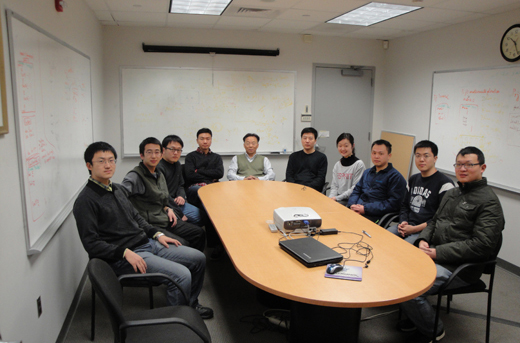
Home |
People |
Research |
Publications |
Facilities |
Related Servers |
Laboratory for Imaging Research and Informatics (IRIS) is affiliated with the Departments of Radiology within the School of Medicine (SOM), Computer Science within the College of Engineering and Applied Sciences (CEAS), Physics and Astronomy within the College of Arts and Science (CAS), and the Program in Biomedical Engineering (PIBE) of SUNY at Stony Brook (SUNY-SB). The laboratory conducts various researches which can be categorized broadly into applied science or relative narrowly into image science. Applied science encompasses the middle ground between basic science and engineering technology, where a definite practical end is in mind, and where the approach may lead to new discoveries in basic science as well. Image science explores the nature via visualization. It can be basic science in exploring molecular sequences or cell functions in biology and physiology or in exploring the solar system in the universe. It can also be technology in detecting defects inside a metal or in detecting lesions in the brain and heart. IRIS Laboratory conducts mainly medical imaging researches, specifically in information processing in medical imaging, within the image science domain.
What is the Goal of Medical Imaging Research?
Medical imaging visualizes the inner world of the human body noninvasively. Its primary objective is to delineate the structures and map the functions of organs and tissues, based on the principles of physics, mathematics, engineering, computer science, physiology and biology.
The ultimate goal of medical imaging research is to extract the image features for physiological and pathological studies of the organs and tissues utilizing the expertise of both imaging scientists and research physicians. The basic studies, for example, could be to film the sequence of embryo development; to map the responses of the brain to visual, auditory, olfactory and tactile stimuli; to visualize the fluid dynamics in the myocardium; to screen the metabolism in the liver; to profile the secretion process of the kidney; or to quantify the targeted tumor response to administered therapy.
The clinical goal of medical imaging research is to improve the sensitivity and specificity of diagnosis by cost-effective, non-invasive, and patient-comfort means.
Why is Information Communication so Important?
The development of three-dimensional (3D) digital modalities, such as computed tomography (CT), magnetic resonance imaging (MRI), positron emission tomography (PET) and single
photon emission computed tomography (SPECT), and the replacement of film in 2D imaging techniques by very high resolution detectors, such as those found in digital mammography and digital chest X-ray systems, have led to an explosion of the quantity of digital data that must be stored, transmitted, processed and analyzed in a modern radiology department. That the data are in digital form has distinct advantages. The sheer management of this immense volume of information is best accomplished by computerized systems. For example the images, once in digital form, may be manipulated by elaborate computer graphics and display systems to screen 3D renderings such as those in CT and MR images for reconstructive surgery of the skull and others, as well as for 3D anthropometry and virtual navigation of organs (e.g., Virtual Endoscopy). A more general term can be visual computing. In one aspect, these digital images can be transmitted at very high speeds to faraway sites for remote diagnosis or online digital collaboration by physicians separated by a great distance. This capability, made possible by recent advances in high-speed digital communication technology, is in the process of revolutionizing the way that clinical radiology will be conducted, named as telemedicine and teleradiology.

